Source:
the velvet rocket blog
Located just off
Meskal Square, the Red Terror Martyr’s Memorial is a good way to get up to speed on the activities of the Derg.
The Derg (or Dergue) was a communist military junta that came to power in Ethiopia following the ousting of Emperor Haile Selassie. Derg, which means “committee” was the short name for the Coordinating Committee of the Armed Forces, Police, and Territorial Army, a committee of military officers which ruled the country from 1974 until 1987.
And they weren’t very nice… Between 1975 and 1987, the Derg imprisoned, tortured and executed tens of thousands of its perceived opponents without trial.
The entrance to the Red Terror Martyr’s Memorial:
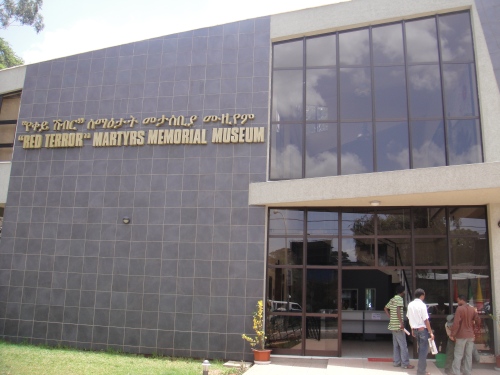
A memorial on the grounds of the memorial:
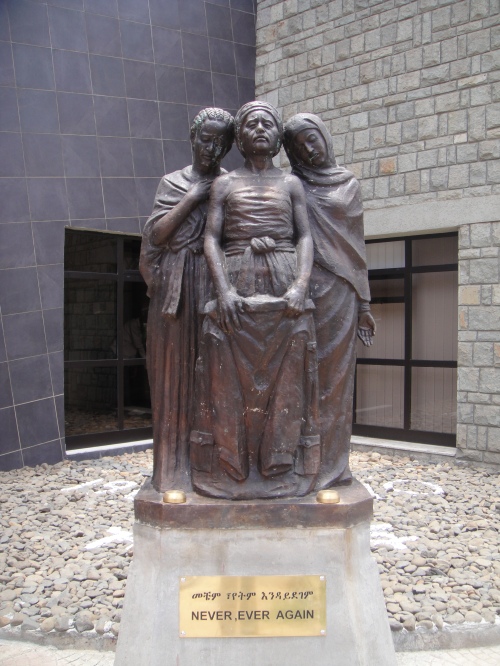
We’ve heard “Never, Ever Again” many times before, haven’t we? It always happens again. And again. And again… It seems to be human nature.
****
And so it begins again in Ethiopia in 1974.
On 12 September 1974 Emperor Haile Selassie was deposed by Derg forces – In this photograph hanging in the museum,
he appears in has last picture, being hustled away to a military prison in the back of a VW Beetle:
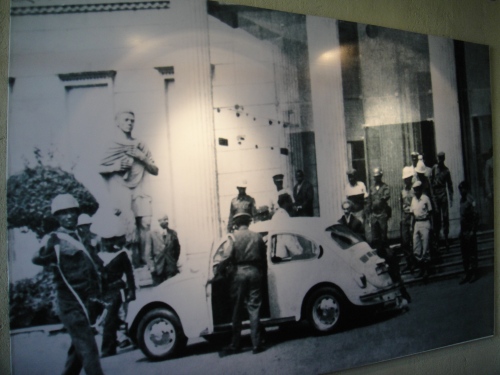
Emerging as the leader of the Derg was Colonel Mengistu Haile Mariam who rode the wave of popular opposition to Selassie’s regime, as well as the Marxist-Leninist ideology of left-wing students.
On 20 December 1974 a socialist state was declared. Under the adage “Ethiopia First” , banks businesses and factories were nationalized along with urban and rural land. Viewed as raising the status of Ethiopia’s peasants, the nationalization program was initially highly praised internationally, particularly by Unesco.
In the meantime, internal political debate degenerated into crude violence. In 1977 the Red Terror campaign was launched to suppress all political opponents. At a conservative estimate, 100,000 people were killed and many more fled abroad.
The hijacking of the popular revolution, the dawn of military rule and the suspension of democratic and civil rights:
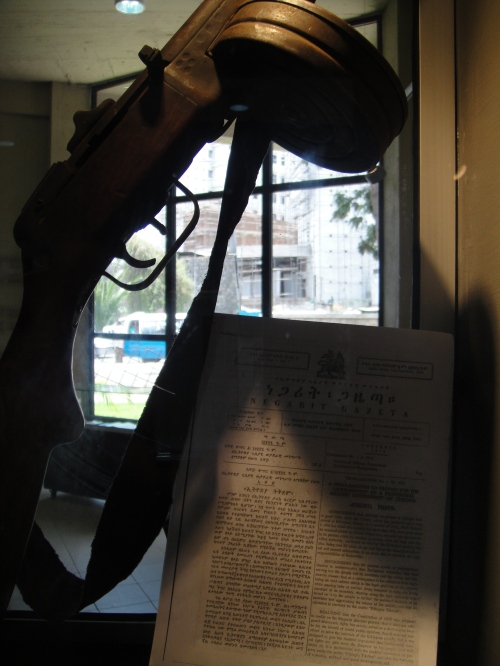
Tanks parading through the streets of
Addis Ababa to demonstrate the power of the Derg:
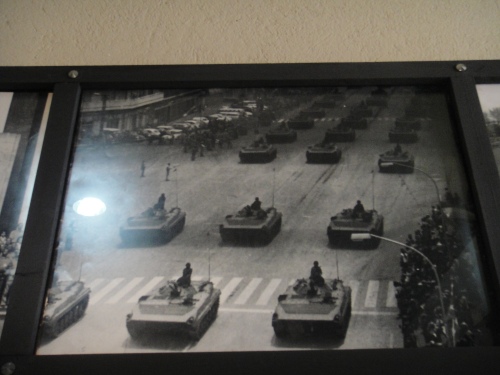
The Derg unleashed the Red Terror because it considered itself powerful beyond measure and that its opinion alone represented the “absolute” truth about Ethiopia. Anyone that did not conform to its kind of “truth” was a counter-revolutionary and subversive.
All of the photographs below are hanging in the museum. I apologize for the glare on some of the photos, but the light in the museum was not even sightly conducive to quality photographs.
Door-to-door searches to hunt down opposition members:
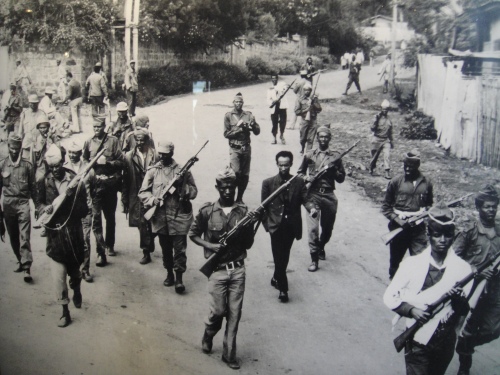
The fate of anyone perceived to be a subversive or opposition member during the door-to-door searches:
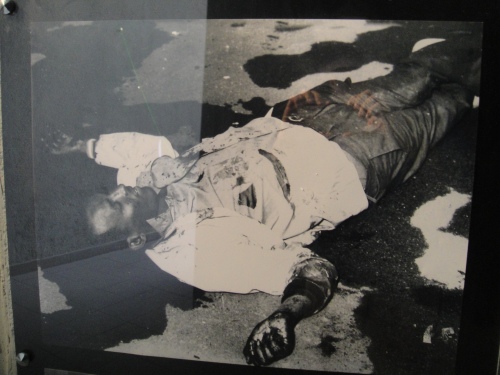
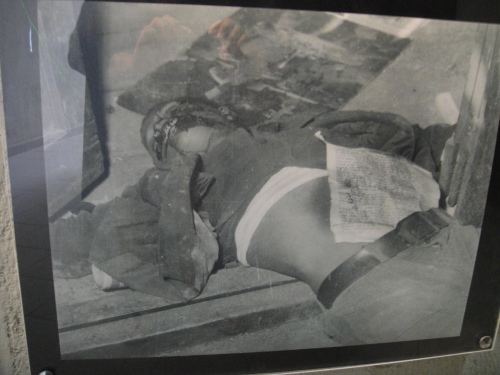
And a display of the door-to-door search findings as recorded by the state-controlled media of Ethiopia:
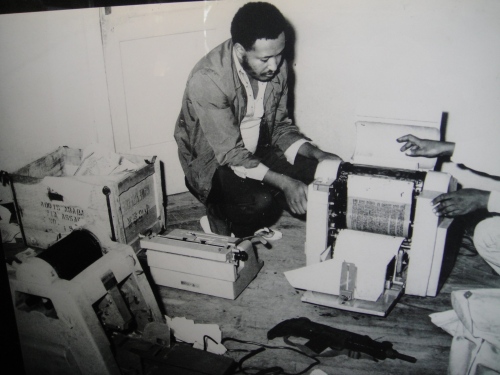
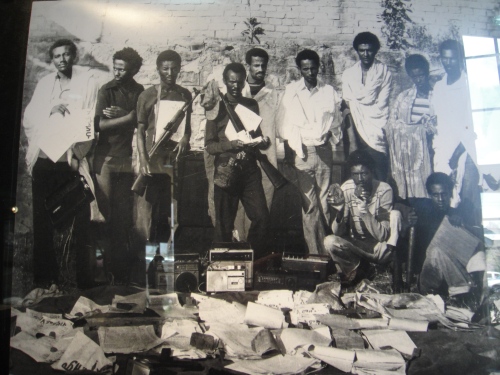
The fate of printing presses and other instruments of free speech:
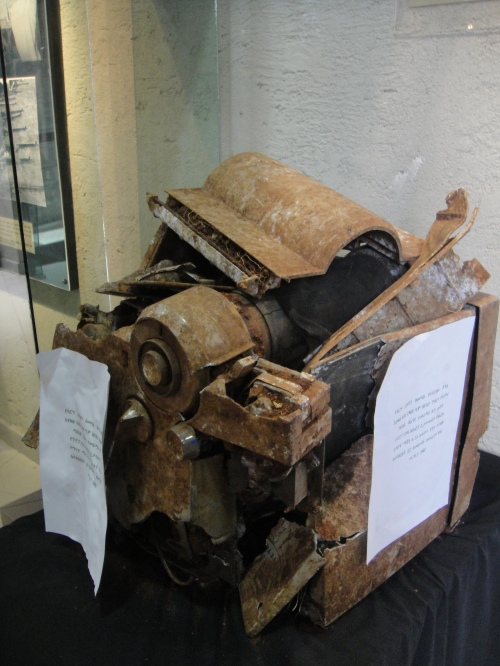
For those that survived their initial capture by the Derg – public confessions. Coerced by torture, the public confessions planted the seeds of psychological terror, mistrust and destruction:
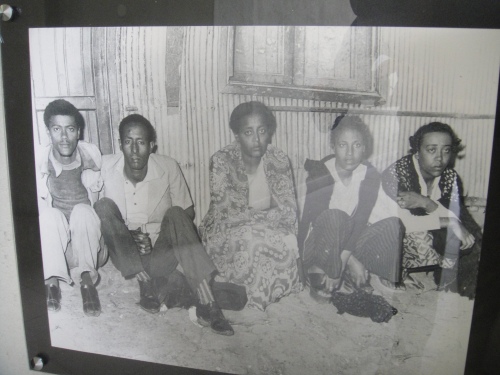
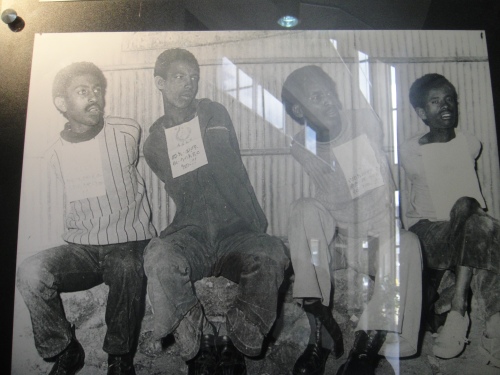
After their “confessions”, the above individuals did not meet a pleasant fate.
Below is a model of “
wofelala” – The preferred torture technique employed by the Derg to break people’s will:
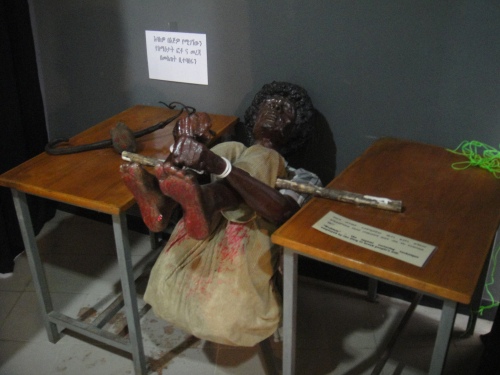
And these are some of the toys the Derg torturers would use to spice things up if they grew bored with
wofelala:
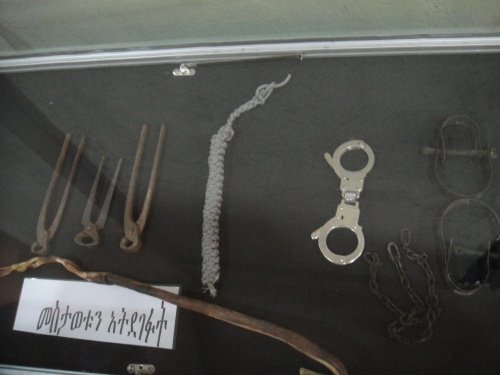
One room of the museum is filled with plastic coffins. The coffins contain the personal effects of thousands of individuals dug up from mass graves – bits of clothing, combs, pens, glasses, shoes, belts, bones and much more:
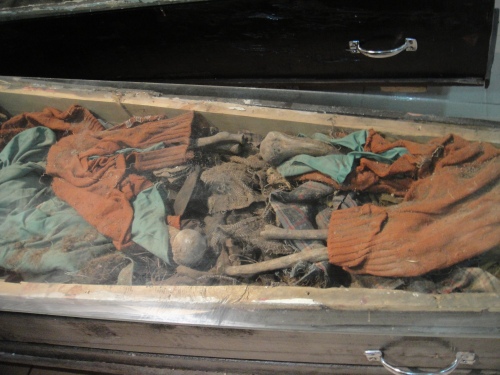
Paintings of some of the torture techniques and executions of the Derg line the walls of the museum in the room described above:
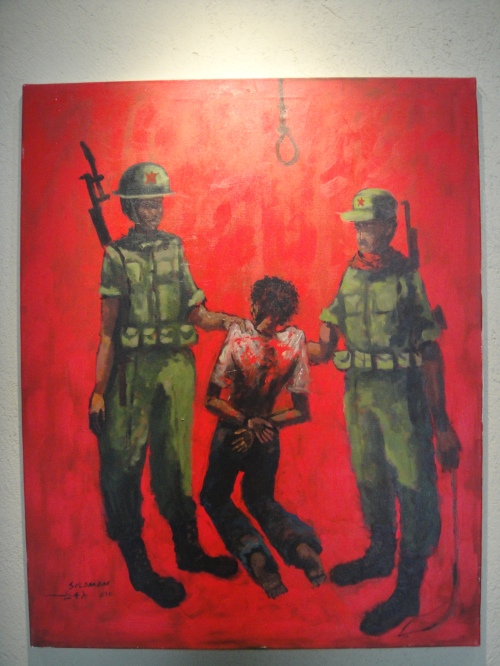
Another room contains an exact replica of a mass grave that was unearthed:
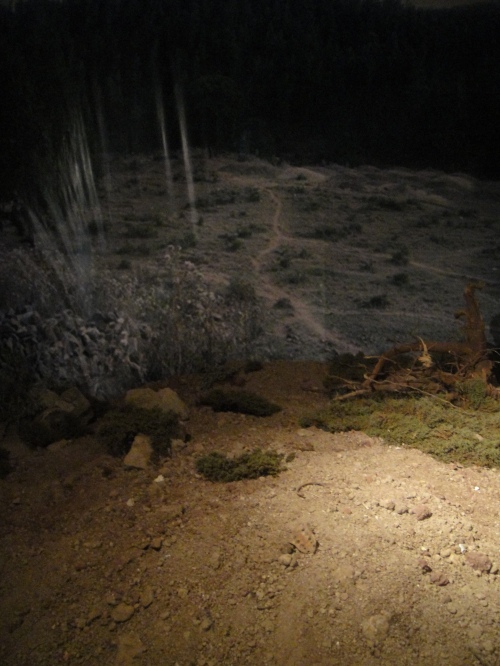
And the very real contents of the mass grave that was recreated above:
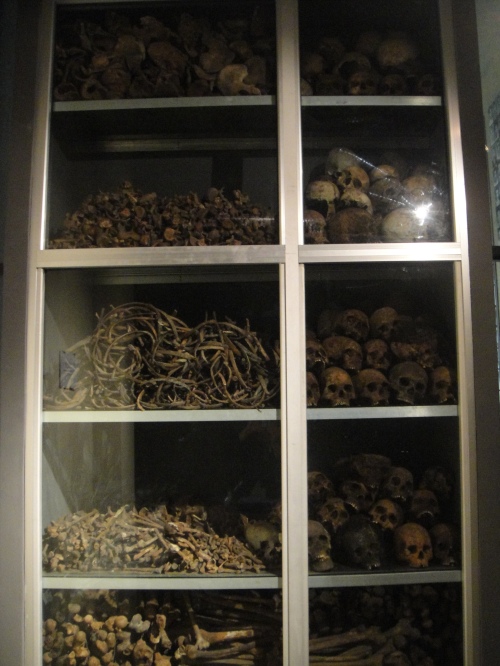
While we were visiting this room, a girl whose grandfather’s remains were in the mass grave depicted above, visited the room for the first time and suffered a breakdown:
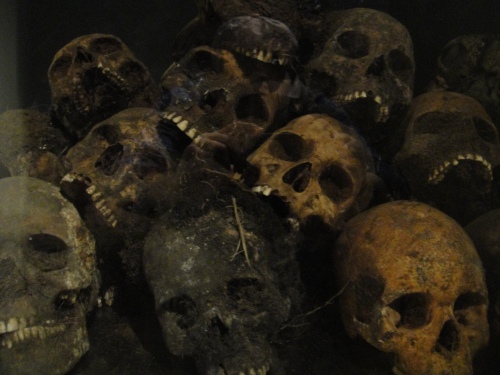
Photos of the disappeared:
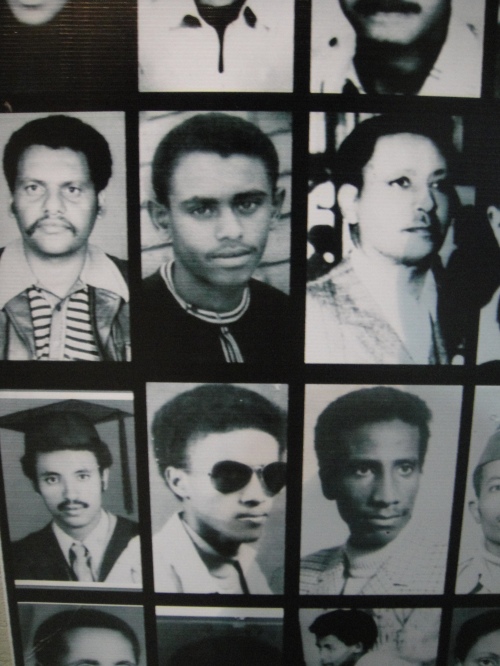
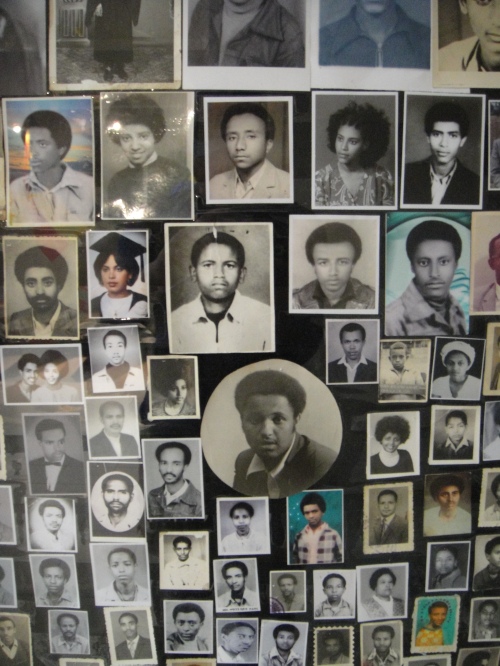
Red Terror only cemented the stance of those opposing the Derg. Numerous armed liberation movements arose, including those of the Afar, Oromo, Somali and, especially, the Tigrayan people. For years, with limited weaponry, they fought the military might of the Soviet-backed Derg.
Whole forests were torched by the Derg to flush out rebel forces. Additionally, the Derg’s large armies, hungry and with inadequate provisions, turned their sights on the land’s natural resources and much wildlife was wiped out.
The various opposition groups eventually united to form the Ethiopian People’s Revolutionary Democratic Front (EPRDF), which in 1989 began its historic campaign to Addis Ababa.
Doubly confronted by the EPRDF and the Eritrean People’s Liberation Front (EPLF) in Eritrea; with the fall of his allies in Eastern Europe and Russia; and with his state in financial ruin as well as his own military authority in doubt, Mengistu’s time was up and, claiming that he was going to inspect troops at a base in southern Ethiopia, Mengistu slipped out of the country on 21 May 1991. Seven days later the EPRDF entered Addis Ababa and the Derg were done.
The victorious march of EPRDF forces toward the capital:
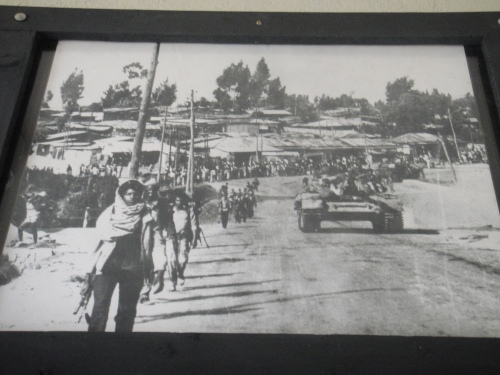
The banality of evil… Derg members on trial in Ethiopia:
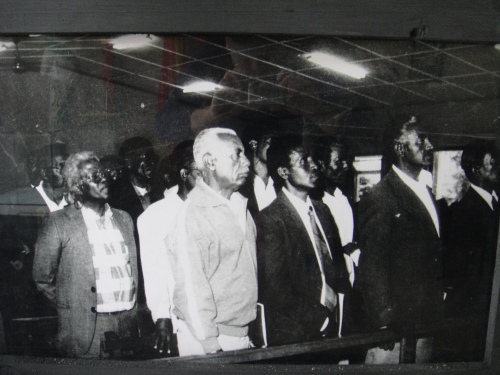
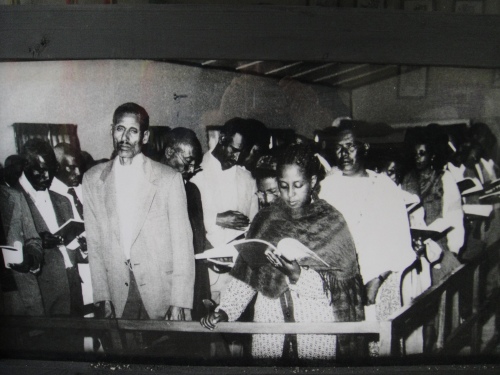
In December 2006, 72 officials of the Derg were found guilty of genocide. Thirty-four people were in court, 14 others had died during the lengthy process, and 25 were tried in absentia.
Mengistu received asylum in Zimbabwe, where he remains comfortably to this day, despite being tried in absentia in Ethiopia and sentenced to death.
 Source: waltainfo
Source: waltainfo 























